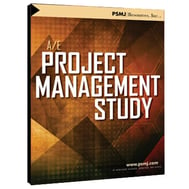 Is it really critical that an architecture or engineering project manager have a project schedule? Most clients and design firms will probably answer the question with "You must be kidding! Of course, you need a schedule, and a good one at that."
Is it really critical that an architecture or engineering project manager have a project schedule? Most clients and design firms will probably answer the question with "You must be kidding! Of course, you need a schedule, and a good one at that."
Regardless of the scheduling system or the project, a number of specific attributes are found in many a good schedule. Here are the top ten!
-
It’s easily communicated. Those who are doing the work must understand what the schedule is all about. If none of your team has ever seen a Critical Path Method Diagram (CPM), the last thing you want to do is use a CPM as your scheduling method. In general, schedules that are in a graphic format are most easily communicated.
-
It’s flexible. Schedules change. It’s a fact of project life. No matter what you say or do, a high percentage of your schedules are going to change. Hopefully, these schedules will not change as a result of mistakes that you make, but they will change, nonetheless.
-
It has the commitment of the project team. If you tell a team member that he or she must have a task finished by Wednesday, that team member must agree to get it done and believe that the task can be done under that time constraint. Otherwise, the team member won’t feel committed to the schedule and may not feel compelled to meet it.
-
It shows interrelationships among tasks very clearly. Tasks are never done in isolation, and most rely on information or results from a previous or concurrent task or group of tasks. Your schedule must show how these tasks interrelate.
-
It’s prepared in calendar time, not in number of work days. To illustrate this point, try to determine the date, within a day or two, that is 60 work days from today. Now, see how much easier it is to determine the date that is 60 calendar days from today. Everyone thinks in terms of calendar time, so use it when preparing your schedules.
-
It forces early deadlines. Tasks will generally expand to fill the available time. If your deadline is July 31, you can count on your office to be humming at 11:59 p.m. on July 30, as everyone scrambles to finalize last-minute changes. The same thing would happen if the deadline were July 20 or August 10. Set the clock ahead, and give yourself some extra time to clean up loose ends.
-
It allows for revision time following each review. Revisions follow reviews like night follows day; however, most project managers schedule time only for the reviews, not the revisions.
-
It builds in time for slippage. Plan for time, or even several periods of time, within the schedule when absolutely nothing is scheduled. Use that time to catch up on those tasks that have fallen behind. If your schedule is so tight that you cannot find any slippage time, use the weekends. Do not schedule any activities for Saturdays and Sundays, and use them instead to catch up when you fall behind.
-
It has correlation with other projects assigned to the team. The single biggest influence on the schedule of your project is the workload from other projects that are currently in your unit/team. If you prepare your schedule in isolation from other projects of the unit/team, it is, most likely, going to fail.
-
It extends beyond the due date of the contract. There will always be activities that extend or arise beyond the contractual due date. Your client will want to ask you questions, contractors will call you, and summary meetings will be held. Anticipate these activities and build them into your schedule.
It goes without saying that among the key objectives of your architecture or engineering (A/E) firm’s project management team is to keep your projects on budget, and your clients happy. However, in many cases, the most commonly used A/E project management practices aren’t always the most effective in terms of meeting these goals—budget performance and client satisfaction. In fact, they can hinder more than help. PSMJ’s 2018 A/E Project Management Study: Why the Most Common PM Practices are NOT the Best Practices provides critical data on project management practices in more than 100 A/E firms, and how they affect budget performance and client satisfaction.
without saying that among the key objectives of your architecture or engineering (A/E) firm’s project management team is to keep your projects on budget, and your clients happy. However, in many cases, the most commonly used A/E project management practices aren’t always the most effective in terms of meeting these goals—budget performance and client satisfaction. In fact, they can hinder more than help. PSMJ’s 2018 A/E Project Management Study: Why the Most Common PM Practices are NOT the Best Practices provides critical data on project management practices in more than 100 A/E firms, and how they affect budget performance and client satisfaction.
For more project management tips, checkout these PSMJ blog posts:
How to Manage Multiple Projects With The Same Client
Need to Know: Project Closeout In a Nutshell
10 Things Every Project Manager Must Know
4 Proven Strategies for Keeping Your Project on Budget



